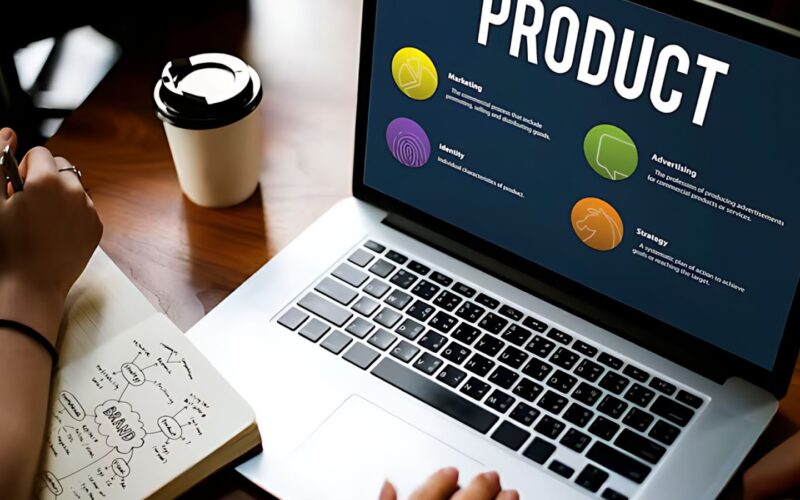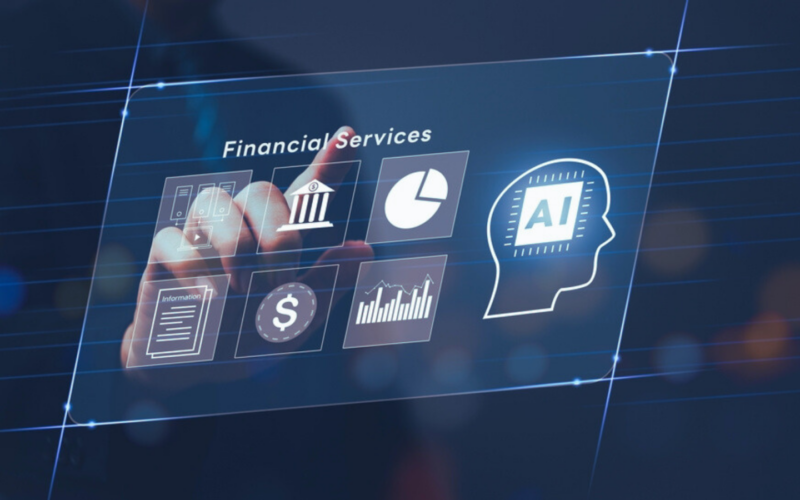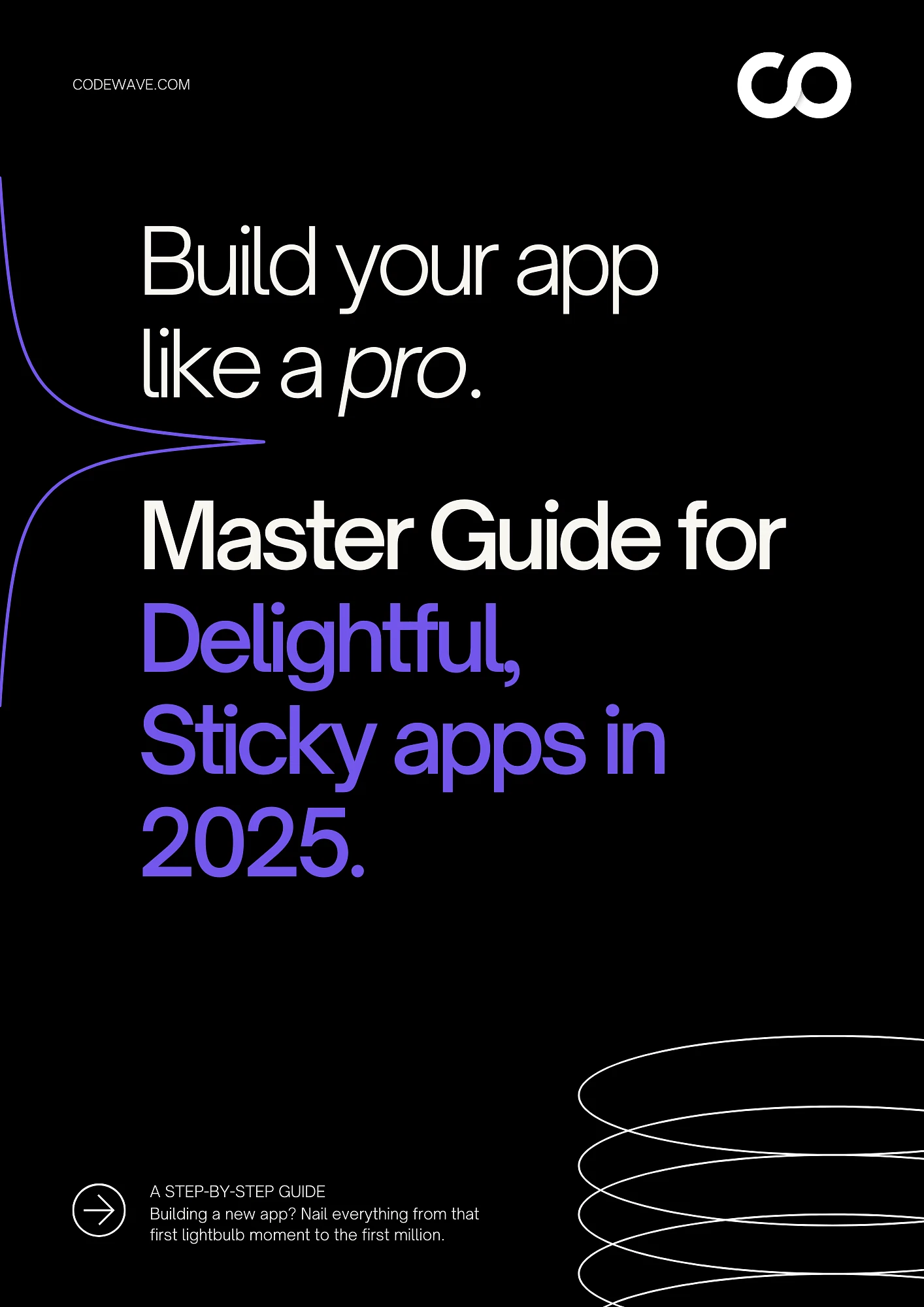Every year, 30,000 products are built. But do you know exactly how many of them fail? Well, that number is close to 95%. Building products without validation wastes time, money, and team morale.
You invest months in development only to discover users don’t want what you built. Product discovery frameworks solve this problem by providing structured approaches to validate ideas before committing resources.
In this guide, we break down the 9 effective product discovery frameworks, when to use each one, and how to implement them effectively. So, let’s get started!
Key Takeaways:
- Structured validation prevents costly product failures and ensures teams build solutions users actually want.
- Different frameworks serve specific needs, from rapid experimentation to deep user empathy and continuous discovery processes.
- Successful implementation requires clear team roles, consistent processes, and regular user contact throughout development cycles.
- User-focused approaches consistently outperform internal assumptions and feature requests from stakeholders or competitors.
- Measurement and documentation enable teams to improve their discovery practices and share insights across projects.
What Are Product Discovery Frameworks?
Product discovery frameworks are structured methodologies that guide teams through identifying, validating, and prioritizing user problems before building solutions. They establish repeatable processes for learning what users need through research, experimentation, and direct feedback.
These frameworks help teams make evidence-based decisions instead of relying on assumptions, opinions, or competitor analysis. They create systematic approaches to reduce uncertainty about user needs, market demand, and solution viability before development begins.
The fundamental principle behind discovery frameworks is learning through direct user contact and experimentation. Teams gather evidence to support or challenge their assumptions about problems worth solving and solutions worth building.
Product discovery frameworks provide structure, but how do teams actually use them day-to-day?
How Does the Product Discovery Process Work?
Product discovery follows a systematic approach that moves teams from assumptions to validated insights. The process varies by framework but shares common elements that ensure thorough validation.
Here’s how effective discovery processes typically unfold:
- Problem identification: Teams start by clearly defining the business challenge or opportunity they want to address, including success criteria and constraints.
- Assumption mapping: Document all assumptions about users, problems, solutions, and market conditions that need validation before proceeding with development.
- Research planning: Choose appropriate research methods, identify target users, and create structured approaches to gather meaningful insights.
- Evidence gathering: Conduct user interviews, surveys, experiments, or observations to collect data that supports or challenges key assumptions.
- Analysis and synthesis: Review findings to identify patterns, prioritize insights, and determine which assumptions were validated or disproven.
- Decision making: Use validated insights to make informed choices about problem focus, solution direction, and next development steps.
Knowing the process helps, but let’s find out what makes structured discovery worth the time investment.
Why Do Product Teams Need Discovery Frameworks?
Product development without structured discovery leads to expensive mistakes and missed opportunities. Teams often build features that users ignore or solutions that don’t address real problems.
Discovery frameworks address these challenges by establishing clear validation processes:
- Risk reduction: Teams test assumptions early, preventing costly development of unwanted features or products that miss market needs.
- Resource optimization: Focused research prevents wasted effort on low-impact features while identifying high-value opportunities worth pursuing.
- Team alignment: Shared frameworks create common language and processes across product, design, engineering, and business stakeholders.
- Decision confidence: Structured validation provides evidence to support product choices and justify resource allocation to leadership teams.
- User focus: Regular user contact keeps teams connected to real problems instead of internal assumptions or competitor features.
- Learning velocity: Systematic approaches to experimentation accelerate the pace of validated learning compared to ad-hoc research efforts.
So, now that the benefits are clear, let’s look at the specific product discovery methods teams use most successfully.
9 Most Effective Product Discovery Frameworks
Product teams have access to numerous proven frameworks, each designed for specific situations and validation needs. Here are the most widely adopted approaches with detailed implementation guidance.
| Framework | Time Investment | Best For | Key Strength | Primary Output |
| Design Thinking | 2-4 weeks | Complex user problems | Deep user empathy | Validated concepts |
| Lean Startup | 1-2 weeks per cycle | Rapid validation | Speed & iteration | Validated hypotheses |
| Jobs-to-be-Done | 3-6 weeks | Understanding motivations | Customer insight | Job maps |
| Design Sprints | 5 days | Quick problem-solving | Focused execution | Tested prototype |
| Double Diamond | 4-8 weeks | Comprehensive exploration | Thorough process | Refined solutions |
| Opportunity Solution Tree | Ongoing | Strategic alignment | Visual communication | Opportunity mapping |
| Kano Model | 2-3 weeks | Feature prioritization | Satisfaction analysis | Priority matrix |
| Story Mapping | 1-2 weeks | Workflow planning | User journey clarity | Release roadmap |
| Impact Mapping | 2-4 weeks | Strategic planning | Business alignment | Impact hierarchy |
Each framework serves different validation needs and team situations. Let’s take a detailed look at each and find out when and how to apply them effectively.
1. Design Thinking
Design Thinking builds deep empathy for users through systematic research and iterative problem-solving. The framework follows five stages: empathize with users, define problems clearly, ideate multiple solutions, prototype concepts, and test with real users.
How it works: Design Thinking works by prioritizing user needs over internal assumptions or technical constraints. Teams spend significant time researching user behaviors and motivations before creating solutions. This approach excels at uncovering unmet needs and generating creative solutions for complex problems.
Example: Airbnb used Design Thinking principles to increase bookings by discovering that users needed better property photos. Instead of adding more features, they focused on solving this specific user problem through professional photography services.
Tips to Apply:
- Conduct empathy interviews: Run 8-12 in-depth user interviews focusing on current behaviors, frustrations, and unmet needs rather than feature requests or solutions they want.
- Map complete user journeys: Document entire user experiences from awareness through task completion, identifying specific pain points and opportunity areas worth addressing.
- Create rapid prototypes: Build low-fidelity prototypes in hours or days to test concepts quickly before committing development resources or detailed design work.
Best For: Teams tackling complex user problems, innovation projects requiring creative solutions, and situations where user needs aren’t well-established. Works especially well for early-stage products or major feature redesigns where deep user empathy is essential.
2. Lean Startup
Lean Startup focuses on rapid experimentation through build-measure-learn cycles to validate business assumptions quickly and cheaply. The methodology emphasizes creating minimum viable products (MVPs) to test core assumptions with real users before committing significant development resources.
How it works: Lean Startup works by treating product development as a series of experiments rather than a linear progression from idea to launch. Teams create hypotheses about user behavior, build simple tests to validate or disprove assumptions, then use results to guide next steps. This approach prioritizes validated learning over feature completion through systematic experimentation.
Example: Dropbox created a simple video demonstration instead of building their full product to test user demand. This MVP approach validated market interest before investing in complex development work, helping them secure early users and investor funding.
Tips to Apply:
- Write testable hypotheses: Create clear, specific statements about user behavior, market demand, or solution effectiveness that can be validated or disproven through experiments.
- Build minimum viable products: Focus on the smallest version that enables learning about user behavior rather than building complete features or polished interfaces.
- Define actionable metrics: Establish specific measurements that indicate whether hypotheses are correct, avoiding vanity metrics like page views that don’t predict business success.
Best For: Early-stage startups, new product launches, and teams with limited resources who need quick validation. Particularly effective when testing new business models or entering unfamiliar markets where assumptions need rapid validation.
3. Jobs-to-be-Done (JTBD)
Jobs-to-be-Done looks at the specific job customers hire your product to accomplish rather than focusing on customer demographics or feature requests. The framework asks “what job is the customer trying to get done?” and maps the complete process they go through to accomplish that job.
How it works: JTBD works by identifying functional, emotional, and social needs that drive purchase decisions. Teams interview customers about their complete experience from recognizing they need to accomplish something through evaluating whether they succeeded. This reveals why customers choose specific solutions and what would make them switch to alternatives.
Example: Netflix discovered customers weren’t hiring them to “watch movies” but to “relax after a stressful day,” “find something entertaining for family time,” or “discover new content without browsing endlessly.” This insight shaped their recommendation algorithms and interface design to serve these jobs rather than just organizing movie catalogs.
Tips to Apply:
- Map the complete job journey: Interview customers about their entire experience from first recognizing they need to accomplish something through evaluating success, including all steps before and after using your product.
- Identify job triggers and obstacles: Document specific situations that prompt customers to hire solutions and what prevents them from getting the job done successfully or efficiently.
- Research all competing solutions: Look beyond direct competitors to find every method customers use to accomplish the same job, including manual processes, workarounds, or doing nothing.
Best For: Established products seeking new growth opportunities, teams entering markets with existing solutions, and situations where customer needs seem satisfied but expansion potential exists. Particularly valuable for subscription services, B2B software, and products with multiple use cases where customers might hire them for different jobs.
Having trouble choosing between multiple frameworks for your discovery process? Codewave’s design thinking service helps teams evaluate options and select approaches that match their timeline, resources, and validation needs.
4. Design Sprints
Design Sprints compress months of work into five focused days using a structured daily agenda. The framework moves teams from problem definition through prototyping and user testing in one week, forcing rapid decision-making while maintaining user validation throughout the process.
How it works: Design Sprints work by time-boxing activities into specific days: Monday for problem mapping, Tuesday for solution sketching, Wednesday for decision-making, Thursday for prototyping, and Friday for user testing. The structured format prevents teams from getting stuck in endless discussions while ensuring they test concepts with real users before committing resources.
Example: Slack used Design Sprints to test new product concepts before allocating development resources, helping them prioritize features that users actually wanted rather than internal assumptions about what would be valuable.
Tips to Apply:
- Assemble the right team: Include a decision-maker, facilitator, designer, developer, and target user representative to ensure diverse perspectives and quick decisions without approval bottlenecks.
- Define one focused problem: Spend Monday clearly defining the specific challenge being addressed rather than trying to solve multiple problems simultaneously during the sprint week.
- Build realistic prototypes: Create demos that feel real to users but require minimal development time, focusing on the experience rather than technical functionality.
Best For: Teams needing quick validation on specific problems, organizations with decision-making bottlenecks, and projects with tight deadlines. Works well for feature validation, workflow improvements, and new product concept testing.
5. Double Diamond
Double Diamond represents discovery as four distinct phases: discovering user problems broadly, defining specific challenges, developing solution options, and delivering validated solutions. The framework visualizes these phases as two diamond shapes showing divergent and convergent thinking patterns.
How it works: Double Diamond works by preventing teams from jumping to solutions too quickly while ensuring they consider multiple options before committing resources. The first diamond focuses on problem space exploration, while the second diamond addresses solution development. Each phase has specific activities and deliverables that guide teams through comprehensive validation.
Example: The UK government used Double Diamond to redesign their digital services, discovering that citizens needed simple, task-focused interactions rather than comprehensive information portals that tried to serve every possible need.
Tips to Apply:
- Explore problems broadly first: Research widely to identify all potential user problems before narrowing focus to specific challenges worth solving with development resources.
- Generate multiple solution concepts: Create several solution approaches before selecting which ones to develop and test with users, avoiding attachment to first ideas.
- Set clear phase checkpoints: Establish specific criteria for moving between phases to prevent premature convergence on incomplete solutions or insufficient problem validation.
Best For: Complex projects requiring thorough validation, teams new to design processes, and organizations needing structured approaches to innovation. Particularly effective for government services, healthcare solutions, and enterprise software development.
6. Opportunity Solution Tree
Opportunity Solution Tree helps teams visualize connections between desired business outcomes, user opportunities, and specific solutions. The framework creates a tree structure that maintains strategic alignment while enabling teams to explore multiple opportunities simultaneously.
How it works: The solution tree works by starting with a clear business outcome at the top, then mapping user opportunities (problems worth solving) as branches, with potential solutions as leaves. Teams use this visual format to communicate discovery insights clearly to stakeholders while ensuring all work connects to measurable business results. The structure helps teams balance multiple opportunities without losing focus on outcomes.
Example: Spotify uses opportunity mapping to balance new feature development with improvements to existing functionality, ensuring all development work connects to specific user outcomes and measurable business goals like user retention or engagement.
Tips to Apply:
- Start with specific outcomes: Define measurable business results with timeframes rather than general goals like “improve user experience” or “increase engagement” that can’t be validated.
- Focus on few opportunities: Work on 2-3 opportunities at a time to maintain research depth rather than spreading efforts too thinly across many different problem areas.
- Generate multiple solutions: Create several solution concepts for each opportunity before selecting approaches for development and testing, avoiding attachment to first ideas.
Best For: Ongoing product development, teams managing multiple priorities, and organizations needing clear communication between product teams and executives. Works especially well for SaaS products and platforms with multiple user types.
7. Kano Model
The Kano Model categorizes product features based on their relationship to customer satisfaction, helping teams prioritize development efforts for maximum user impact. Features fall into categories: must-haves (basic expectations), performance features (linear satisfaction increase), and delighters (unexpected value that exceeds expectations).
How it works: The model works by surveying customers with both functional and dysfunctional questions about each feature to determine how satisfaction changes when features are present or absent. Teams plot features on satisfaction curves to identify which improvements will have the greatest user impact per development hour invested. This classification guides feature prioritization and resource allocation decisions.
Example: iPhone development used Kano principles by ensuring basic phone functionality worked reliably (must-haves), improving call quality and battery life (performance features), and adding innovative touch interfaces (delighters) that exceeded user expectations for mobile devices.
Tips to Apply:
- Survey with paired questions: Ask customers both “How do you feel if this feature is present?” and “How do you feel if this feature is absent?” to accurately categorize each feature type.
- Map satisfaction curves: Plot features showing how satisfaction changes with feature quality to identify which improvements will have the greatest impact per development investment.
- Research competitor baselines: Study how competitors handle must-have features to ensure your product meets basic expectations before adding delighter features that differentiate.
Best For: Feature prioritization decisions, mature products seeking improvement opportunities, and teams with limited development resources who need maximum impact per feature. Particularly useful for consumer products and subscription services.
8. Story Mapping
Story Mapping organizes user activities into a visual flow that shows the complete user journey while prioritizing features by importance and development sequence. The framework creates horizontal user flows showing activities in chronological order, then adds vertical priorities showing which features enable workflows versus nice-to-have improvements.
How it works: Story mapping works by starting with user goals and breaking them down into activities, then tasks, then specific features needed to support each task. Teams create a two-dimensional map showing user flow horizontally and feature priority vertically. This format guides MVP definition and release planning by identifying minimum features needed for end-to-end workflows.
Example: Spotify used story mapping to prioritize music discovery features by mapping complete user journeys from opening the app through finding and playing new songs they enjoy, ensuring each release provided complete value.
Tips to Apply:
- Start with user activities: Focus on what users do (activities and goals) rather than what the system provides (features and functions) to maintain user-centered perspective throughout planning.
- Create walking skeleton releases: Identify minimum features needed for end-to-end user workflows before adding improvements or optimizations that enhance but don’t enable core tasks.
- Use vertical slicing: Plan releases that deliver complete user value through full workflows rather than partial feature sets that don’t solve complete problems.
Best For: Agile development teams, complex products with multiple user workflows, and organizations transitioning from feature-based to user-centered planning. Especially effective for web applications and mobile apps with sequential user tasks.
9. Impact Mapping
Impact Mapping connects business goals with user behaviors and product features through visual cause-and-effect relationships. The framework starts with business objectives, identifies actors who can create that impact, defines behavior changes needed, and finally determines product features that enable those behaviors.
How it works: Impact mapping works by creating a four-level hierarchy: why (business goal), who (actors), how (behavior changes), and what (features). Teams use this structure to maintain strategic focus throughout development while ensuring every feature connects to measurable business outcomes. The visual format helps stakeholders see how individual features contribute to broader objectives.
Example: LinkedIn used impact mapping to increase professional networking by identifying specific user behaviors (profile completion, connection requests, content sharing) that drive business results rather than building features that seemed professionally relevant but didn’t affect key metrics.
Tips to Apply:
- Define measurable business outcomes: Start with specific, time-bound objectives rather than vague goals like “improve user engagement” or “increase market share” that can’t be validated.
- Include all relevant actors: Identify every stakeholder who influences goal achievement, not just primary users, such as administrators, partners, or internal teams who affect success.
- Focus on behavior changes: Concentrate on what people need to do differently rather than what features they need, ensuring solutions address root causes of business challenges.
Best For: Strategic product planning, teams struggling with feature prioritization, and organizations needing better alignment between business and product goals. Works well for B2B products and platforms with multiple stakeholder types.
Multiple frameworks work well, but your team needs to pick the right approach for your situation.
How to Choose the Right Product Discovery Framework?
Selecting the appropriate framework requires evaluating your specific situation, team capabilities, and validation needs rather than following industry trends or popular approaches.
Consider these factors when making framework decisions:
- Team experience level: Teams new to user research benefit from structured approaches like Design Thinking or Double Diamond that provide clear step-by-step guidance.
- Timeline constraints: Projects with tight deadlines work better with focused frameworks like Design Sprints or Lean Startup that emphasize speed over comprehensiveness.
- Problem clarity: Well-defined problems suit solution-focused frameworks like Story Mapping, while unclear problems need exploration-heavy approaches like Design Thinking.
- Resource availability: Limited budgets favor lightweight frameworks like Lean UX or Jobs-to-be-Done that require minimal tools or external research support.
- Stakeholder expectations: Some frameworks provide better communication tools for executives and investors who need clear validation evidence and strategic alignment.
- Development methodology: Agile teams benefit from frameworks like Lean UX or Story Mapping that integrate with sprint cycles, while waterfall projects can use comprehensive approaches.
- User access: Frameworks requiring extensive user contact need teams with good customer relationships or research recruitment capabilities.
Struggling to validate product ideas quickly while managing tight development timelines? Codewave’s Idea to Product services help teams implement rapid discovery approaches that fit aggressive launch schedules.
Selecting your framework matters, but someone needs to take responsibility for making discovery happen consistently.
Who Should Lead Product Discovery Activities?
Product discovery requires clear ownership and defined responsibilities to ensure systematic execution and actionable results. Different team members contribute specific skills and perspectives to the discovery process.
| Role | Primary Responsibilities | Key Skills Needed |
| Product Manager | Discovery strategy, stakeholder alignment | Business analysis, prioritization |
| UX Researcher | User studies, data analysis | Research methods, synthesis |
| Product Designer | Concept development, prototyping | Design thinking, visualization |
| Engineering Lead | Technical feasibility, architecture | System design, constraints |
| Business Analyst | Requirements gathering, process mapping | Documentation, stakeholder management |
The most effective approach involves multiple team members in discovery activities rather than delegating everything to one person.
Now, clear ownership helps, but effective discovery also requires the right tools for research and collaboration.
Essential Tools for Product Discovery Work
Product discovery requires tools that facilitate research, collaboration, and insight sharing across teams. Some of the essential tools worth considering include:
| Tool Type | Primary Function | Popular Options |
| User Research | Interview scheduling, recording | Calendly, Zoom, User Interviews |
| Survey Collection | Quantitative data gathering | Typeform, SurveyMonkey, Google Forms |
| Prototyping | Concept visualization | Figma, Sketch, InVision |
| Collaboration | Team workshops, mapping | Miro, Mural, FigJam |
| Analysis | Data synthesis, reporting | Dovetail, Airtable, Notion |
Teams often succeed with basic tool sets focused on consistent execution rather than comprehensive platforms that require extensive setup and training. The key is establishing reliable processes for gathering and sharing insights.
Having good processes and tools sets you up well. However, many teams need help implementing discovery effectively.
Turn Ideas into Effective Products with Codewave
Many teams recognize the value of structured discovery but struggle with implementation. Starting effective discovery requires expertise in research methods, stakeholder management, and process design that internal teams often haven’t developed.
Codewave brings proven experience helping product teams implement discovery frameworks successfully. We’ve guided digital transformation projects across industries, helping companies build products that users adopt and businesses profit from.
Our Product Discovery Implementation Includes:
- Framework selection consulting: We assess your team situation, market context, and business goals to recommend the most effective discovery approaches for your specific needs.
- Design thinking workshop facilitation: Hands-on sessions that teach your team user empathy, ideation, and validation techniques they can apply independently on future projects.
- Custom process development: We establish discovery workflows that integrate with your existing product development cycles while ensuring consistent user contact and insight sharing.
- Research methodology training: Practical guidance on user interviews, survey design, prototype testing, and other research methods that provide reliable validation data.
- Stakeholder alignment facilitation: We help communicate discovery insights to executives and investors in formats that build support for user-centered development decisions.
Visit our portfolio to see how we’ve helped companies implement discovery processes that drive measurable business results.
The most effective teams treat discovery as an ongoing capability rather than a one-time project. They invest in building research skills, establish regular user contact, and create processes for sharing insights across product development activities.
Contact us today and find out how structured discovery frameworks can help your team make better product decisions.
FAQs
1. How long should product discovery take before development begins?
Discovery timing depends on project complexity and uncertainty levels. New products typically require 4-8 weeks of initial discovery, while feature additions might need 1-3 weeks of validation work before development.
2. What’s the difference between product discovery and market research?
Product discovery focuses on validating specific user problems and solution concepts for development decisions. Market research examines broader industry trends, competitive analysis, and customer segments for strategic planning purposes.
3. How do you measure discovery framework success?
Track learning metrics like experiments completed and user insights gathered alongside outcome metrics such as feature adoption rates and user satisfaction scores after product launches based on discovery findings.
4. Should discovery continue during product development cycles?
Yes, effective teams practice continuous discovery throughout development. Initial discovery validates core assumptions while ongoing discovery helps teams adapt to new learnings and changing user needs without major product pivots.
5. Can discovery frameworks work equally well for B2B and B2C products?
Yes, though research methods may differ slightly. B2B discovery often involves stakeholder interviews and longer evaluation cycles, while B2C focuses on behavioral observation and rapid experimentation with individual users.
Codewave is a UX first design thinking & digital transformation services company, designing & engineering innovative mobile apps, cloud, & edge solutions.







